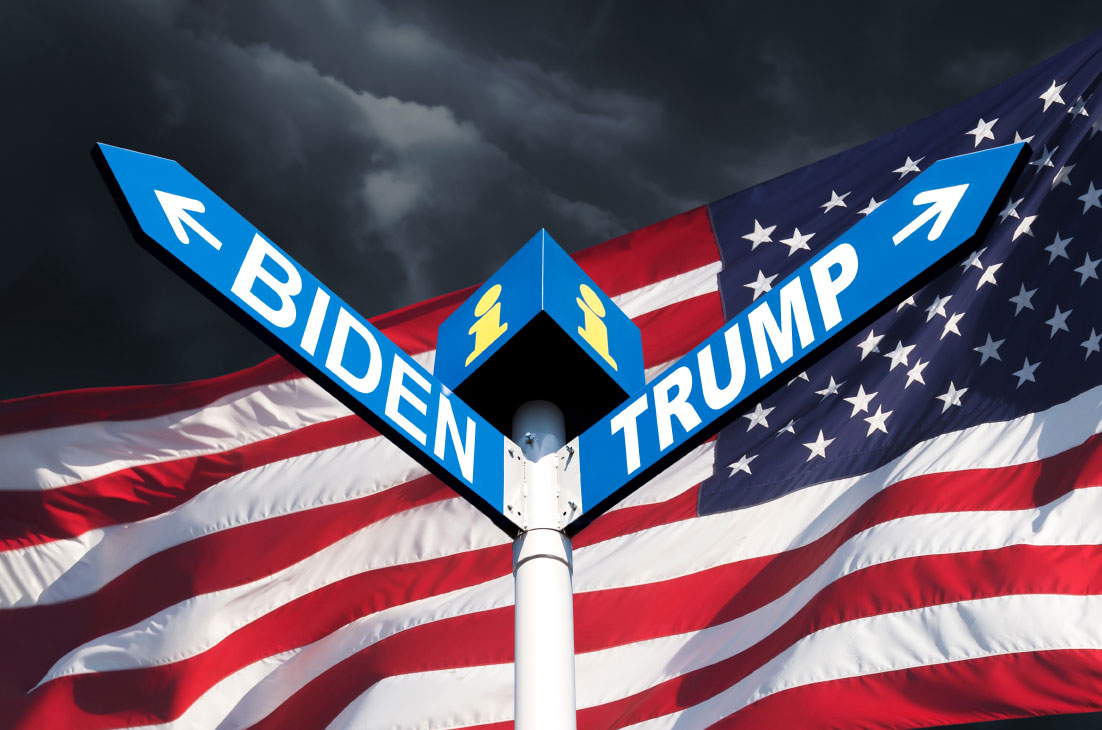Trump and Biden Share Some Trade Goals
The Candidates, However, Differ on The Details

The Candidates, However, Differ on The Details.
While the candidates for president diverge sharply in many areas, they share the same goals when it comes to trade and economic policy: President Donald Trump and former Vice President Joe Biden both want to revive manufacturing jobs in the U.S. and combat unfair trade practices pursued by other nations, namely China.
The question of “how” is where the conflict begins.
One of the starkest differences is over China, which is accused of subsidizing its domestic industries, stealing intellectual property and taking advantage of free-trade rules.
In office, Trump has slapped tariffs on goods and materials imported from China. Among the tariffs most closely watched by the flexible-packaging industry are those on steel and aluminum. Trump’s campaign website describes tariffs and other trade policies as a boost to producers based in the U.S. “These industries will be able to re-open closed mills, sustain a skilled workforce, and maintain or increase production,” the website says.
In addition to wielding tariffs, Trump has worked to end or renegotiate trade deals that he sees as harmful to U.S. interests. Among his first acts as president, for example, was withdrawing from the Trans-Pacific Partnership, a trade deal that would have linked the U.S. to Australia, Brunei, Canada, Chile, Japan, Malaysia, Mexico, New Zealand, Peru, Singapore, and Vietnam. Trump also pulled the U.S. out of the Paris Agreement on climate.
On the other hand, Trump oversaw a reworking of the North American Free Trade Agreement, or NAFTA, which took effect in 1994. In its place is a new deal known as the United States Mexico Canada Agreement, or USMCA.
“The USMCA is a modern trade agreement that opens new markets for U.S. farmers and manufacturers, will encourage increased manufacturing in the U.S., and allow workers and small businesses to flourish,” according to the Republican candidate’s website.
Biden’s campaign, in contrast, emphasizes the domestic harm caused by Trump’s policies. “In 2019, U.S. manufacturing was in recession, and Trump’s much vaunted China trade strategy ended up contributing to a decline in American manufacturing exports,” according to the campaign’s website.
The Democratic candidate does not explicitly outline a policy on tariffs or trade. Instead, Biden’s campaign promises revolve around calls for working with allies to contain China and achieving other goals.
For example, Biden pledges to work with other countries to combat climate change under the Paris Agreement. “He will lead an effort to get every major country to ramp up the ambition of their domestic climate targets. He will make sure those commitments are transparent and enforceable and stop countries from cheating by using America’s economic leverage and power of example. He will fully integrate climate change into our foreign policy and national security strategies, as well as our approach to trade,” according to his website. For example, Biden would impose a carbon tax on goods coming from countries that aren’t living up to their climate goals.
Biden also devotes a portion of his economic platform to “Buy American” policies. They would include strengthening programs to encourage—and mandate, in the case of government contracts—the purchase of U.S.-made goods.
“Today, loopholes in the law allow products to be stamped ‘made in America’ for purposes of federal procurement, even if barely 51% of the materials used to produce them are domestically made,” according to the former vice president’s campaign site. “Biden will tighten these rules to require more legitimate American content—so when we deem something made in America, it reflects the work and output of American workers.”
The candidates’ policies for the U.S. economy as a whole offer additional contrasts. Trump is running on a record of tax cuts and regulatory relief that his campaign argues has delivered economic growth, at least until the COVID-19 pandemic struck. Biden’s campaign promises call for greater investments in manufacturing, infrastructure, job training, and research and development. They follow a theme of “building back better” from the economic toll of the pandemic.
Trump’s campaign website does not mention plans for tax cuts in a potential second term or additional pandemic relief beyond the Coronavirus, Aid, Relief and Economic Security, or CARES, Act, which temporarily expanded unemployment benefits and provided billions of dollars in aid to small businesses, state governments and health care providers, among others.
However, Trump issued a series of executive orders in August designed to deliver some aid in the face of stalled negotiations with Congressional Democrats. They authorized continued boosts in unemployment compensation and potential relief from payroll taxes.
Biden’s campaign argues that Trump’s tax cuts have largely benefited the wealthy and large corporations at the expense of average Americans. He has called for reversing some of the tax cuts and plowing the money into initiatives that help workers and small businesses, including manufacturers.
In some respects, both candidates are running on past performance. An overriding theme of Trump’s campaign website is “promises made, promises kept.”
Biden, meanwhile, has highlighted his role in the economic recovery that followed the Great Recession. If he wins this election, however, his ability to carry out the myriad plans detailed by his campaign will hinge, in part, on whether Democrats or Republicans control Congress in 2021.
Joel Berg is a freelance writer based in York, Pennsylvania.


